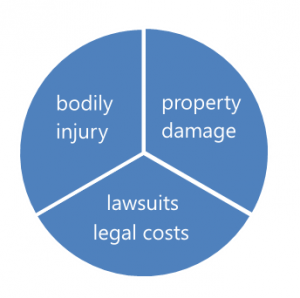Here are 4 ways to improve your businesses injured worker outcomes.
Injured workers are a part of running a business. If you stay in business long enough, you are going to have an incident where one of your employees is injured. This is not a bad representation of your business, but how you handle the situation can have a lasting effect on your relationship with your employees and your insurance company. Here are four ways in which you can manage and incident where you have an injured worker that are best for your injured worker, your business and the insurance company you partner with.
Take care of the injury, first and foremost
This is simply the right thing to do. The best way to improve injured worker outcomes is to first deal with the injury. Taking care of the injured employee is also the best thing to do for the insurance companies to help get the injured employee the best medical care and it can help the medical professionals treat the injured employee quickly and cost effectively.
Report the injury to your agent and carrier
A lot of business owners may not think it is so, but your insurance agent and carrier are on your side. It is in their best interest to help your business and to help your injured worker get the care they need and get back on the job as quickly as possible. They deal with these situations a lot. They can navigate the workers’ compensation system much more effectively than you can. More important than anything is the fact that they cannot help you with these injuries until you notify them an injury has occurred. Also, documenting the injury allows your business and the carrier to keep track of your claims history. If there tends to be a pattern of injuries, you can address it and the carrier can help you. They interact with business owner across the country in all industries. Chances are they have dealt with a similar situation and can give you some guidance as to how to prevent/fix the problem from continuing to occur.
Keep your Agent in the loop
Remember your independent insurance agent is on your side. At least they very well should be. If for instance, you feel your carrier may not be living up to their responsibilities the agent can speak with the carrier on your behalf. Agents interact with carriers very frequently for a number of reasons. They have an established relationship with these organizations and they can more easily get your claim in front of the right person to most effectively solve your problem. Also, they can only help you when they know an incident has occurred. The longer you go without getting them involved in a claim the more likely the claim is to get out of hand. This means more missed time for your injured worker, a larger cost to the insurance carrier and probably higher rates on premium for you in the future. Keeping your agent involved can help prevent all of this from occurring.
Let the carrier take care of the billing
Do not try to take care of the billing yourself. Even if you have been in business for a long time and you think you know the workers comp system fairly well. Things change. A medical facility that you have been taking your injured worker to for years may stop a relationship with your carrier. If you take the injured worker to a medical facility out of the carriers’ network, you may be liable for the costs. The network for workers’ comp is not necessarily the same network for health insurance, even if you use the same insurance company for both policies. It is always best to let your insurance company do what they do best.











